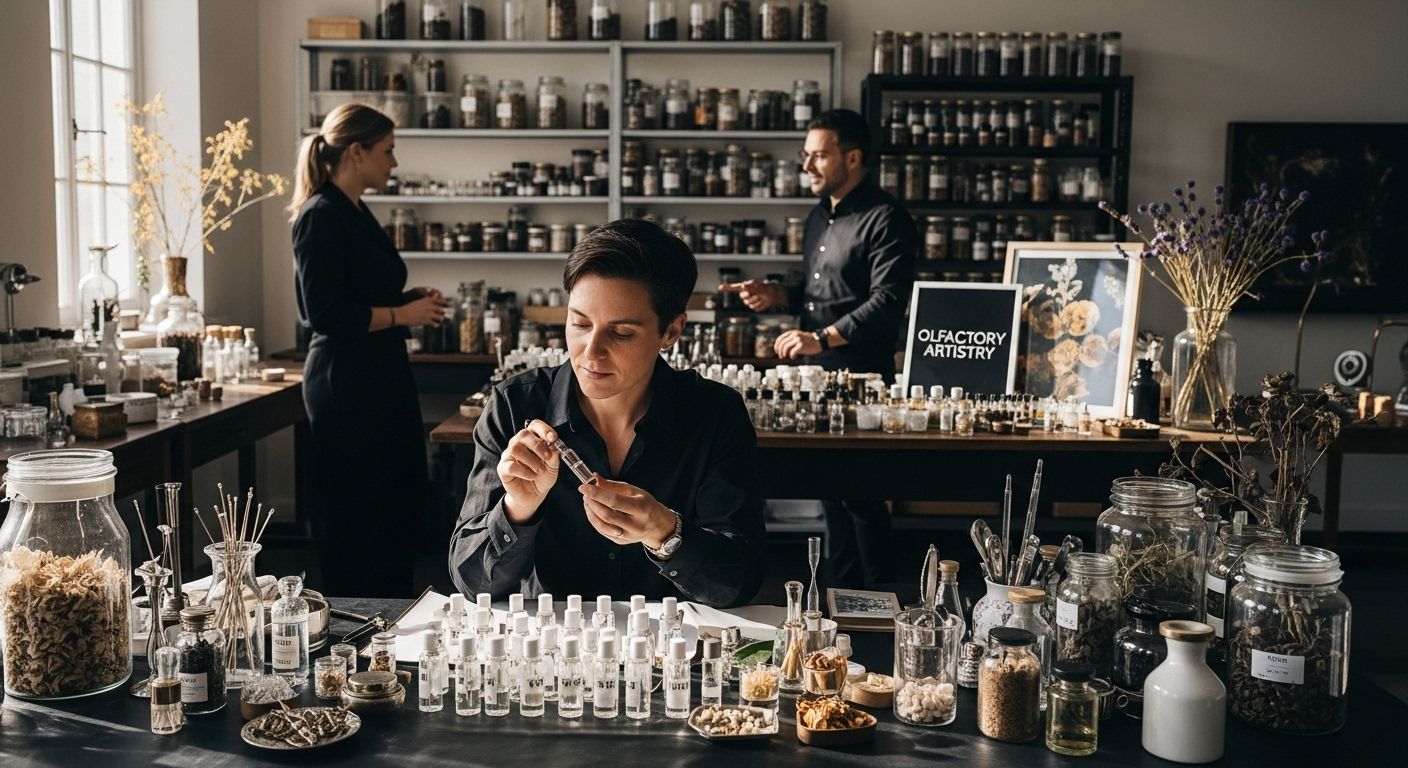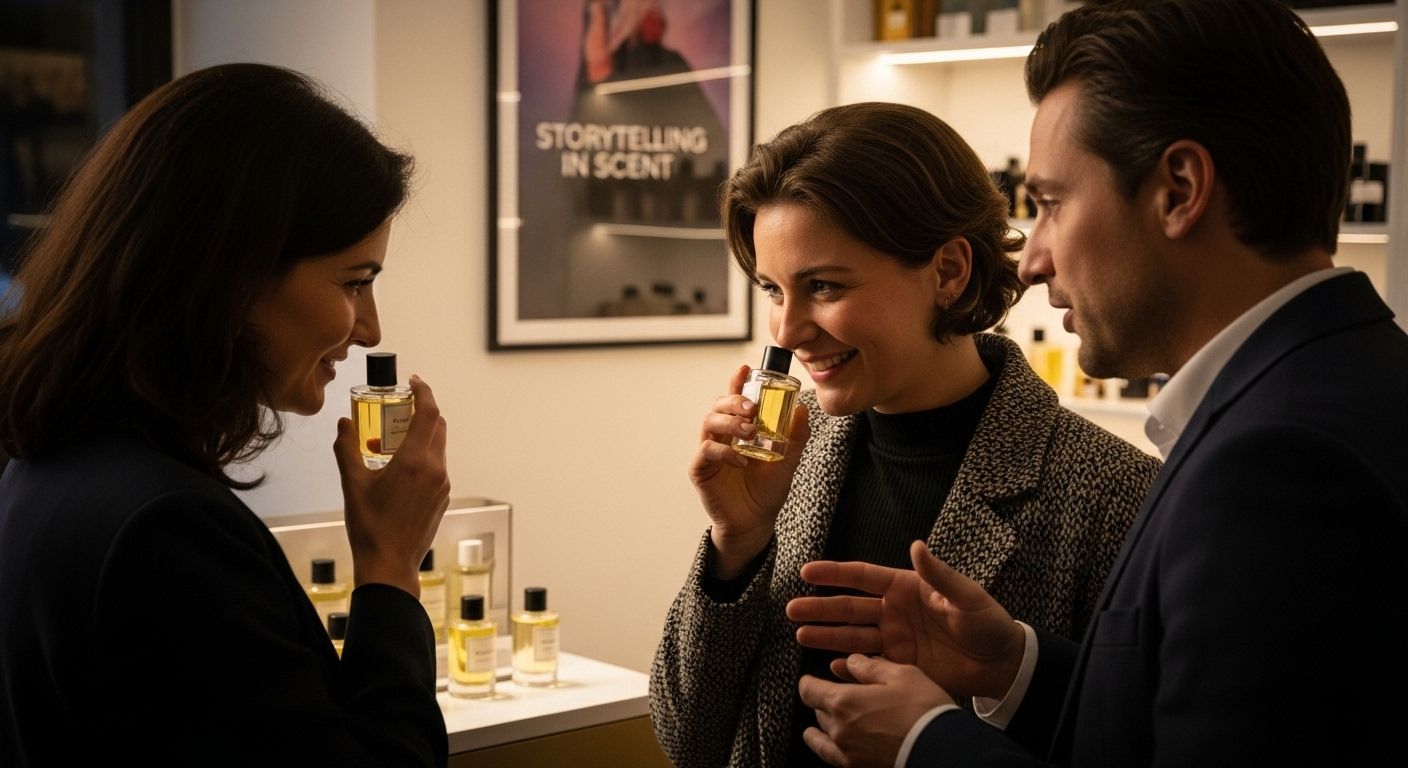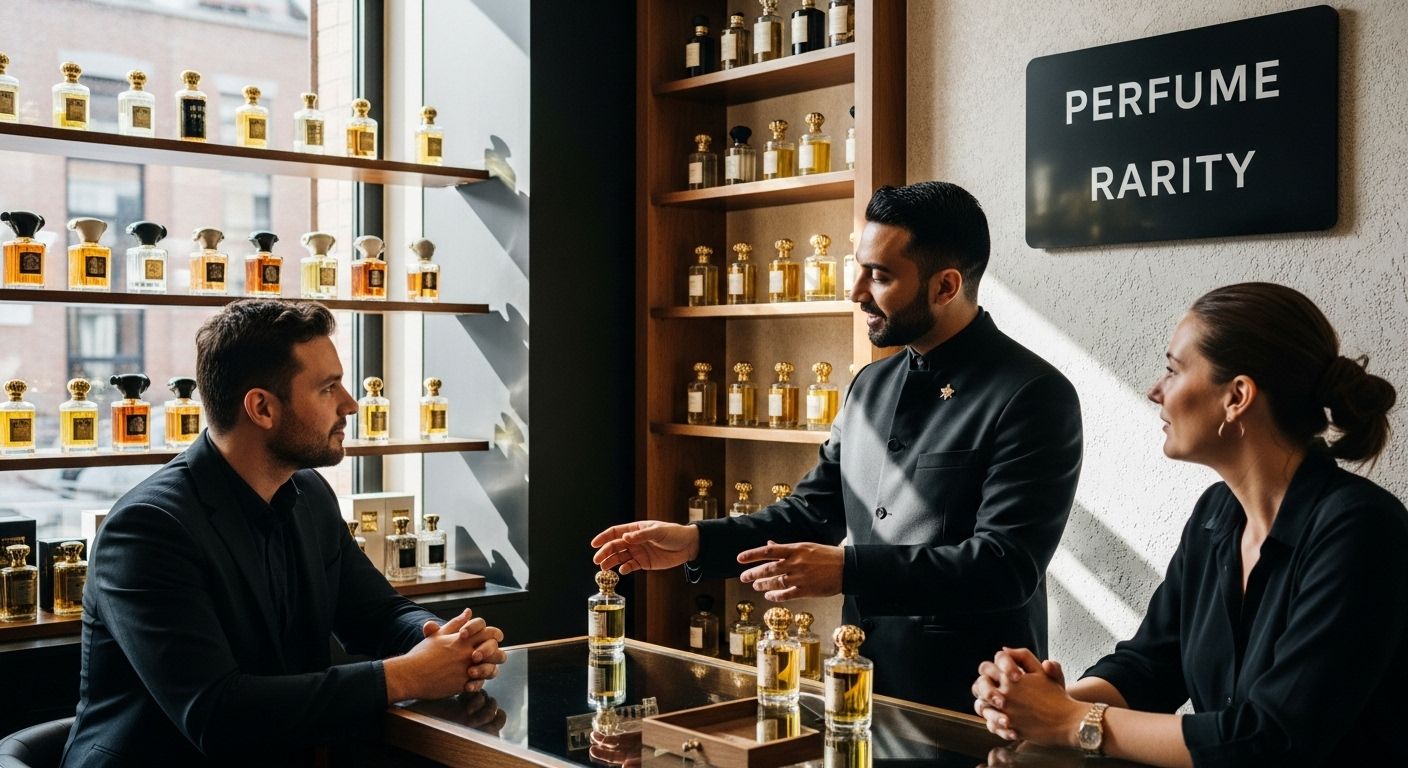
Understanding Defining Perfume Rarity for Niche Markets
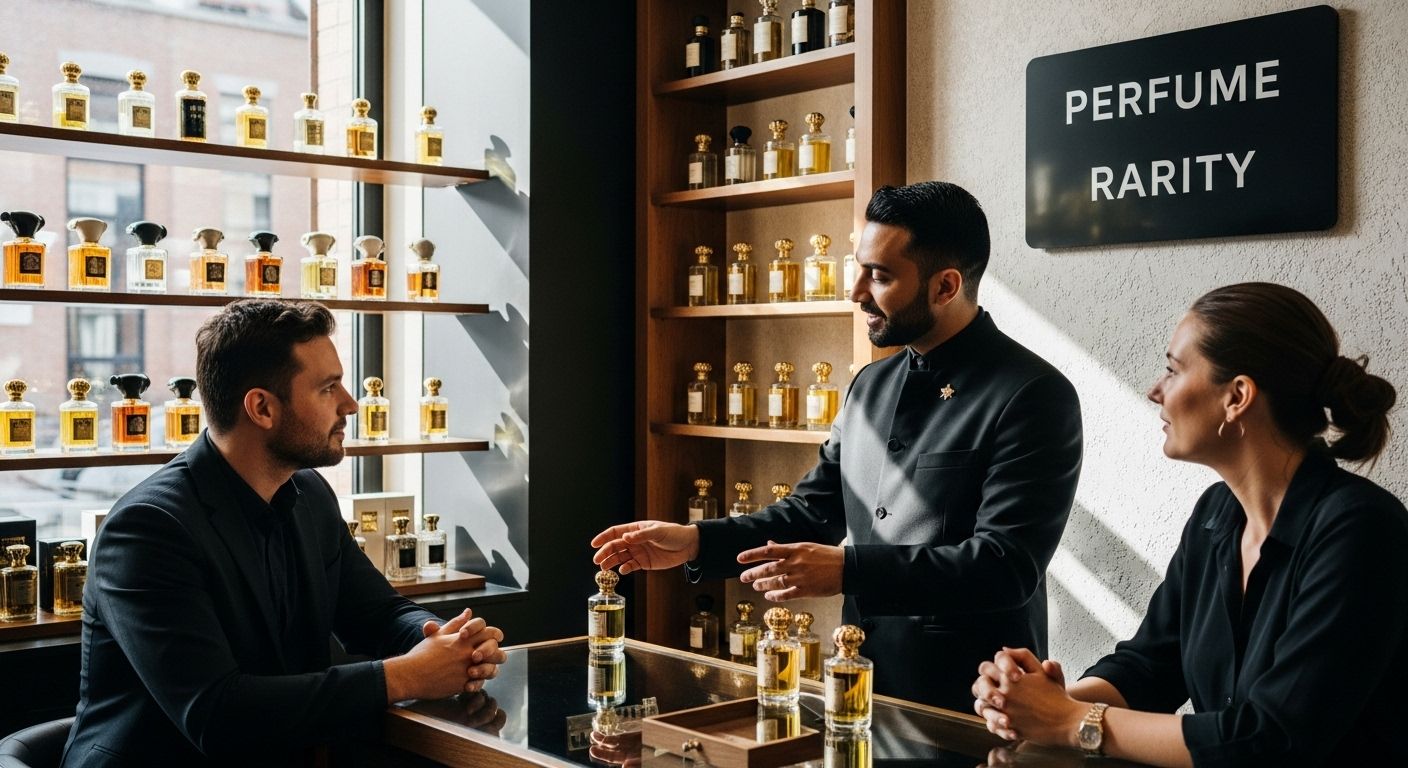
Perfume rarity is more than an obsession for collectors. Some rare scents feature ingredients so unique that a single bottle can contain extracts from plants harvested only once a decade. That sounds scarce, right? Yet the real twist is that contemporary perfumes can include tens to even hundreds of carefully chosen components, making rarity a blend of artistry, science, and intense competition among creators. The most coveted fragrances are woven from stories just as rare as their formulas.
Table of Contents
- What Is Perfume Rarity And Its Key Characteristics?
- The Importance Of Rarity In The Perfume Industry
- Factors That Contribute To Perfume Rarity
- How Perfume Rarity Influences Market Value
- Cultural Perspectives On Perfume Rarity Across Regions
Quick Summary
| Takeaway | Explanation |
|---|---|
| Unique ingredients enhance rarity | Rare fragrances often use exotic, difficult-to-source botanical extracts that contribute to their exclusivity. |
| Limited production drives desirability | Crafting a fragrance in small quantities increases its perceived value and creates consumer demand for rare perfumes. |
| Perception influences market dynamics | Consumers are attracted to rare perfumes due to their status-signaling nature and the emotional connection they provide. |
| Artistry meets scientific precision | Master perfumers blend artistic expression with scientific expertise to create unique and complex fragrance compositions. |
| Cultural interpretations vary globally | Different regions interpret perfume rarity through unique cultural lenses, affecting consumer preferences and market trends. |
What is Perfume Rarity and Its Key Characteristics?
Perfume rarity represents a complex intersection of artistry, scarcity, and extraordinary craftsmanship within the fragrance world. At its core, defining perfume rarity involves understanding how unique ingredients, limited production, and exceptional manufacturing processes contribute to a fragrance’s exclusivity and perceived value.
The Essence of Fragrance Uniqueness
Rarity in perfumery emerges from multiple sophisticated factors. Perfume rarity is not merely about limited quantity but encompasses the intricate selection of ingredients, their sourcing complexity, and the precision of their blending. Research from the ACS Symposium Series highlights that exceptional fragrances often feature distinctive odor profiles across five primary categories:
- Fresh Notes
- Floral Notes
- Oriental Notes
- Woody Notes
- Animal Notes
Each category represents a unique sensory landscape where master perfumers create extraordinary olfactory experiences.
The Scientific and Artistic Dimensions
The scientific approach to defining perfume rarity involves understanding molecular composition and aromatic complexity. According to neurobiology research, contemporary perfumes can contain tens to hundreds of ingredients, including essential oils from rare plant extracts and meticulously engineered synthetic aromatic chemicals.
Key characteristics that elevate a fragrance’s rarity include:
- Extraordinary ingredient sourcing from remote botanical regions
- Complex molecular structures that challenge traditional scent profiles
- Minimal production quantities ensuring exclusivity
- Intricate blending techniques requiring exceptional expertise
Master perfumers approach fragrance creation as both a scientific discipline and an artistic expression, carefully balancing chemical precision with creative intuition. The result is a sensory masterpiece that transcends conventional olfactory experiences.
Explore our most exclusive perfume crafting techniques and discover the intricate world of rare fragrance design.
The Importance of Rarity in the Perfume Industry
Rarity transforms perfumery from a mere commercial product into an extraordinary art form that transcends traditional consumption patterns. Within the fragrance ecosystem, rarity represents a nuanced interplay between cultural perception, artistic expression, and consumer psychology.
Consumer Perception and Emotional Value
The significance of rarity extends far beyond simple scarcity. Research published in PLOS One reveals that a small number of perfumes receive disproportionately high consumer engagement, indicating that exclusivity profoundly influences market dynamics.
Consumers are drawn to rare perfumes for several compelling reasons:
- Status Signaling: Rare fragrances communicate sophistication and discerning taste
- Personal Identity: Unique scents allow individuals to express individuality
- Collectible Appeal: Limited edition fragrances become coveted collector’s items
Economic and Creative Implications
Rarity drives innovation within the perfume industry, compelling master perfumers to push creative boundaries. The economic model of rare fragrances creates a unique marketplace where artistic merit and exclusivity determine value.
Key economic characteristics of rare perfumes include:
- Higher price points reflecting extraordinary craftsmanship
- Limited production runs ensuring marketplace exclusivity
- Premium positioning that attracts luxury market consumers
- Investment potential for collectors and fragrance enthusiasts
Master perfumers view rarity as an opportunity to challenge traditional olfactory experiences, transforming each fragrance into a narrative of sensory exploration. Discover our approach to rare fragrance design and experience the pinnacle of perfumery craftsmanship.
Factors that Contribute to Perfume Rarity
Perfume rarity emerges from a complex constellation of elements that transcend simple production limitations. Understanding these multifaceted contributors requires deep exploration of scientific, artistic, and market dynamics that transform a fragrance from ordinary to extraordinary.
The following table summarizes the key factors that contribute to perfume rarity, drawing from the main scientific, artistic, and cultural dimensions discussed in the article.
| Factor | Description |
|---|---|
| Unique Ingredients | Utilizes rare botanicals, exotic species, and complex extracts |
| Limited Production Quantities | Fragrances crafted in very small batches to ensure exclusivity |
| Complex Blending Techniques | Handcrafted blending and precision molecular engineering |
| Intricate Manufacturing | Demands specialized extraction and quality control processes |
| Cultural Significance | Embodies storytelling, ritual, and collector interest |
| Market Perception | Perceived value tied to exclusivity and artisanal reputation |
| Artistic Expression | Combines creative intuition with scientific precision |
Ingredient Sourcing and Composition
The foundation of perfume rarity lies in exceptional ingredient selection. Neurobiological research reveals that fragrance complexity involves intricate molecular interactions where minor compositional changes dramatically impact sensory perception.
Key ingredient factors driving rarity include:
- Ultra rare botanical extracts from remote geographical regions
- Exotic plant species with limited annual harvest
- Challenging extraction processes requiring specialized techniques
- Molecular structures with unique stereochemical configurations
Production and Manufacturing Complexity
Rarity is not merely about ingredients but also encompasses the intricate manufacturing process. Master perfumers invest extraordinary effort in creating fragrances that challenge conventional olfactory experiences.
Critical production elements include:
- Extremely limited production quantities
- Handcrafted blending techniques
- Precision molecular engineering
- Sophisticated quality control measures
Market Perception and Cultural Significance
The final dimension of perfume rarity involves complex market dynamics and cultural perception. Social research indicates that consumer engagement follows a nonlinear distribution, where certain fragrances achieve disproportionate recognition.
Market factors influencing rarity encompass:
- Consumer perception of exclusivity
- Artistic narrative behind the fragrance
- Collector and luxury market dynamics
- Individual expression through unique scent profiles
Explore our most exclusive fragrance engineering techniques and experience the pinnacle of perfumery innovation.
How Perfume Rarity Influences Market Value
Perfume rarity represents a sophisticated economic phenomenon where scarcity, craftsmanship, and perception converge to create extraordinary market dynamics. The interplay between limited availability and consumer desire transforms fragrances from mere products into coveted luxury assets.
Economic Valuation Mechanisms
Research exploring market differentiation strategies reveals complex mechanisms through which perfume rarity generates substantial economic value. Master perfumers and luxury brands strategically leverage scarcity to elevate product perception.
Key economic valuation principles include:
- Inverse relationship between production volume and market price
- Premium pricing reflecting extraordinary craftsmanship
- Brand reputation amplifying perceived value
- Collector and investment market dynamics
Psychological Perception of Value
Consumer psychology plays a critical role in transforming rare perfumes into desirable commodities. The emotional and status-related dimensions of fragrance acquisition go far beyond simple olfactory experience.
Psychological factors driving market value encompass:
- Exclusivity as a personal identity marker
- Social signaling through luxury consumption
- Emotional connection to unique sensory experiences
- Aspirational purchasing behaviors
Brand Positioning and Market Strategies
Luxury perfume brands meticulously craft narratives that elevate rare fragrances beyond traditional product categories. Strategic marketing transforms limited edition perfumes into cultural artifacts with significant monetary and emotional worth.
Strategic positioning elements include:
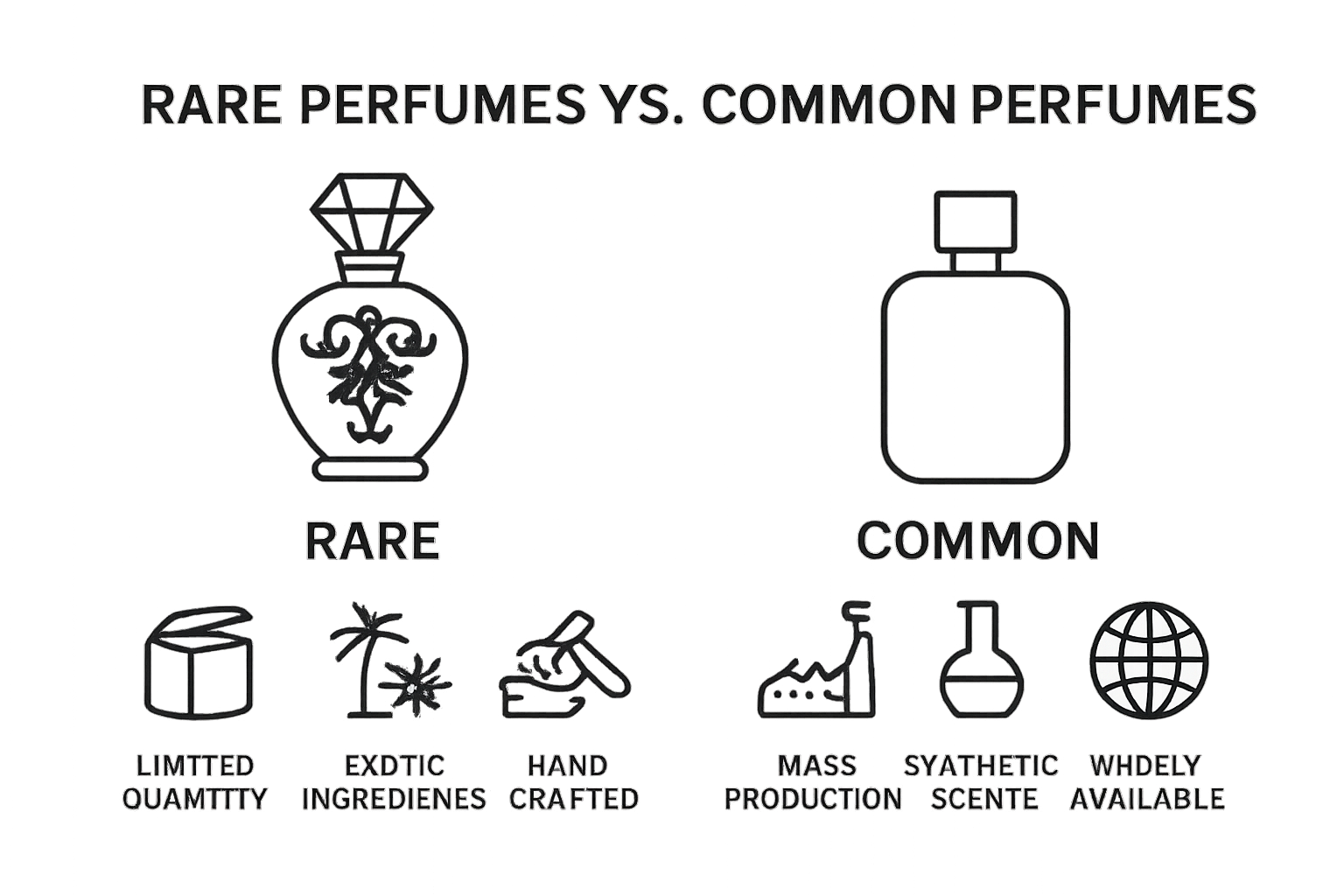
- Storytelling that emphasizes ingredient provenance
- Limited production runs creating artificial scarcity
- Artistic packaging reinforcing premium positioning
- Targeted marketing to discerning consumer segments
Discover our exclusive approach to rare fragrance valuation and understand the intricate world of luxury perfumery.
Cultural Perspectives on Perfume Rarity Across Regions
Perfume rarity transcends mere fragrance composition, representing a complex cultural narrative that varies dramatically across global landscapes. Each region brings unique philosophical, historical, and sensory interpretations to the concept of olfactory exclusivity.
This table compares how key cultural regions approach and value perfume rarity, highlighting the historical, sensory, and philosophical distinctions underscored in the article.
| Region | Approach to Rarity | Core Values Emphasized |
|---|---|---|
| Middle East | Attar and oud traditions, ritualistic fragrance use | Intricacy, tradition, spiritual depth |
| Europe | Artisanal heritage, legacy craftsmanship | History, artistry, luxury |
| Asia | Minimalist, subtle fragrances, symbolic importance | Simplicity, refinement, ritual |
| North America | Focus on personal identity and individual expression | Uniqueness, status, self-expression |
Historical Context and Transformation
Research examining perfume advertisements reveals how cultural perceptions of perfume have evolved from elite rarities to widely accessible commodities. Different regions interpret rarity through distinct cultural lenses.
Regional perspectives on perfume rarity include:
- Middle Eastern cultures valuing intricate attar and oud traditions
- European markets emphasizing artisanal and heritage craftsmanship
- Asian markets prioritizing subtle, minimalist fragrance experiences
- North American consumers focusing on individual expression
Socioeconomic Influences on Perception
Cultural attitudes toward perfume rarity are deeply intertwined with socioeconomic structures and historical traditions. The significance of a rare fragrance extends beyond its olfactory profile to symbolize social status, personal identity, and cultural heritage.
Key socioeconomic factors shaping perfume perception:
- Economic stratification determining luxury consumption
- Cultural rituals and ceremonial fragrance usage
- Generational differences in perfume appreciation
- Global trade and ingredient accessibility
Ritualistic and Symbolic Dimensions
Perfume rarity represents more than a commercial product in many cultures. It embodies spiritual connections, familial traditions, and personal storytelling. The ritualistic approach to fragrance selection varies significantly across different cultural contexts.
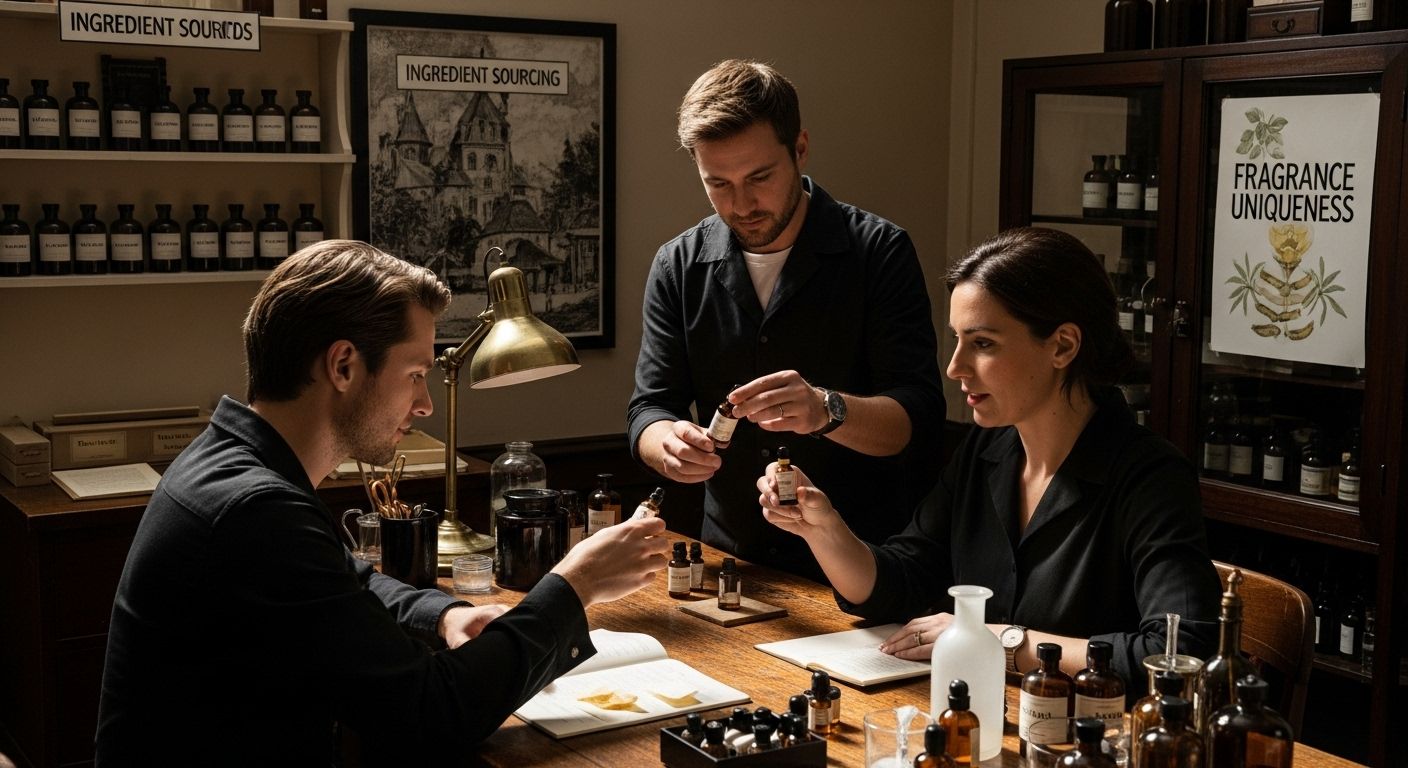
Symbolic dimensions of perfume rarity encompass:
- Spiritual and religious significance of specific scents
- Generational transmission of fragrance knowledge
- Personal and collective memory encoding
- Emotional and sensory communication
Explore our cross-cultural fragrance philosophy and discover the intricate global narratives of perfume creation.
Discover True Perfume Rarity with Adar Perfumes
If you have ever felt frustrated searching for a truly rare fragrance that stands apart in a world filled with mass-produced scents, you are not alone. The article “Understanding Defining Perfume Rarity for Niche Markets” highlights how ingredient scarcity, intricate craftsmanship, and authentic exclusivity set the highest bar for niche perfumery. But finding a brand that genuinely lives these values can be a challenge for collectors and connoisseurs who crave uniqueness and artistry in every bottle.
Explore the Against All Odds Collection, where each perfume is made entirely by hand using the rarest ingredients and presented in handcrafted packaging created from precious woods, marble, and traditional painting. These perfumes are not just scents, they are art objects and statements of individuality built upon the principles of rarity explored throughout the article.
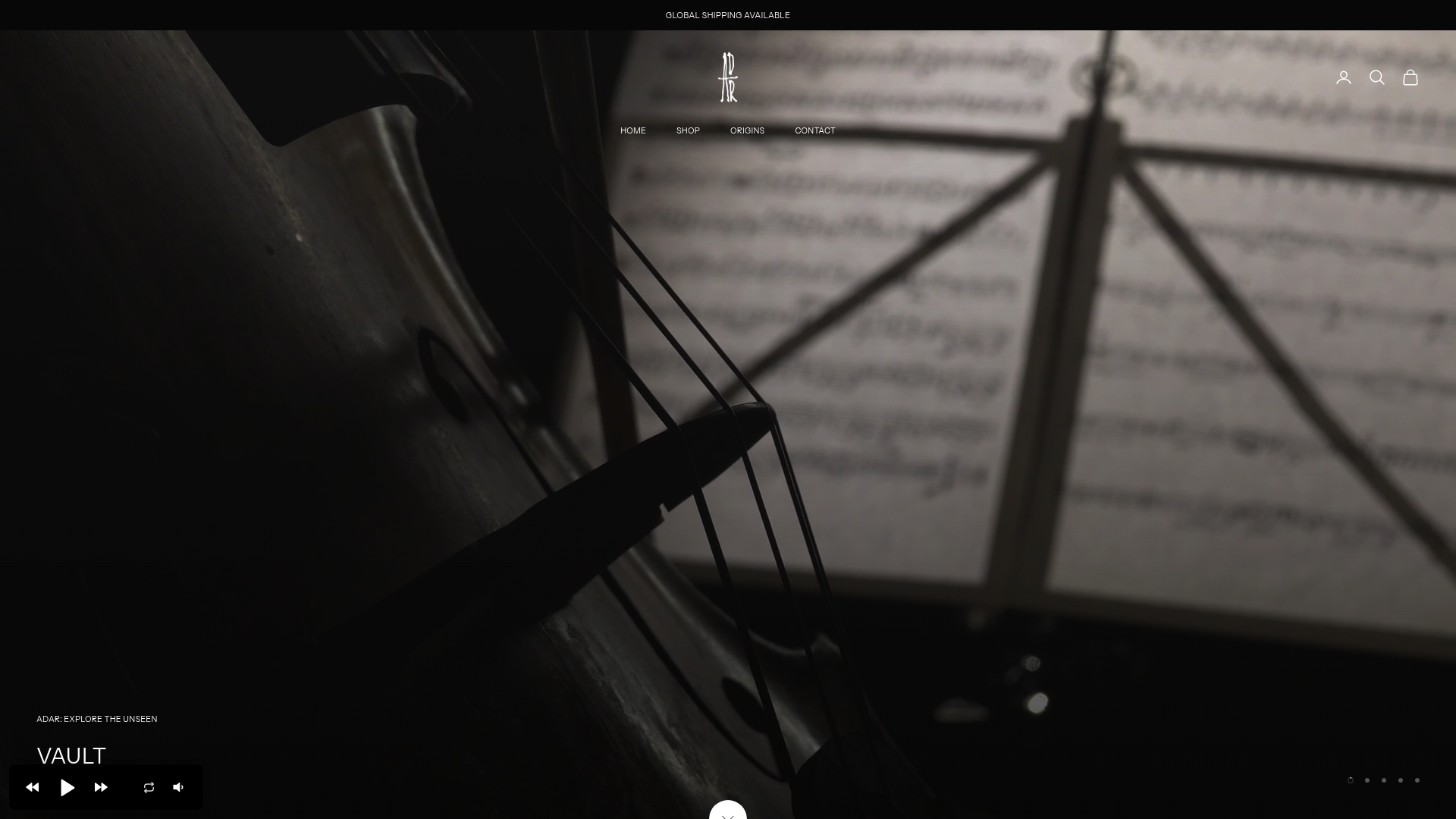
Take your place at the highest level of indie perfumery and let your collection reflect true sophistication. Experience the full depth of ultra-niche creation today by visiting our main site at Adar Perfumes or discover more distinctive treasures in the Alpha 11 Collection. Elevate your expectations and claim your piece of olfactory artistry before these limited creations disappear.
Frequently Asked Questions
What factors contribute to perfume rarity?
Perfume rarity is influenced by exceptional ingredient sourcing, complex manufacturing processes, and market perception. Unique botanicals from remote regions, intricate blending techniques, and limited production quantities all elevate a fragrance’s rarity.
How does perfume rarity affect consumer perception?
Consumers often view rare fragrances as status symbols that reflect sophistication and personal identity. The exclusivity of a scent enhances its appeal, making it a coveted collectible among fragrance enthusiasts.
Why are rare perfumes typically more expensive?
Rare perfumes command higher prices due to their extraordinary craftsmanship, limited availability, and the complexity of their ingredients. The narrative behind each fragrance also plays a significant role in its perceived value.
How can I identify a rare perfume?
To identify a rare perfume, look for limited edition releases, unique ingredient combinations, and fragrances crafted by master perfumers. Additionally, consider the fragrance’s storytelling aspect and its cultural significance in the niche market.

